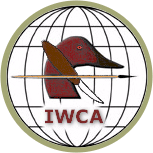Burning for Feather Detail with Tommy Rogers
Article by Bill Einsig
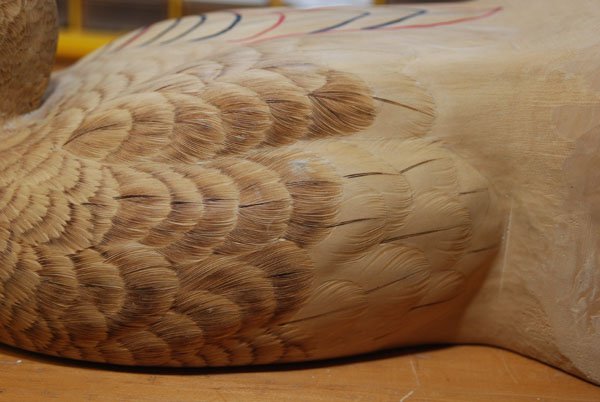
In previous articles, Rogers demonstrates his method of laying out realistic feather groups. Then, in another article, he demonstrates his method of using a simple stoning technique without power to add detail to feather splits. Now, Rogers uses a burning tool to add additional detail to those feathers with two easy techniques that make a creative difference.
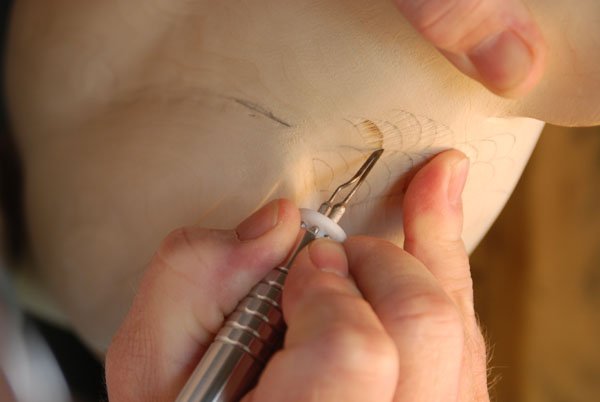 |
|
Rogers begins burning the feathers on this demo bird by pulling the pen from the outer edge of the covert toward the inside. |
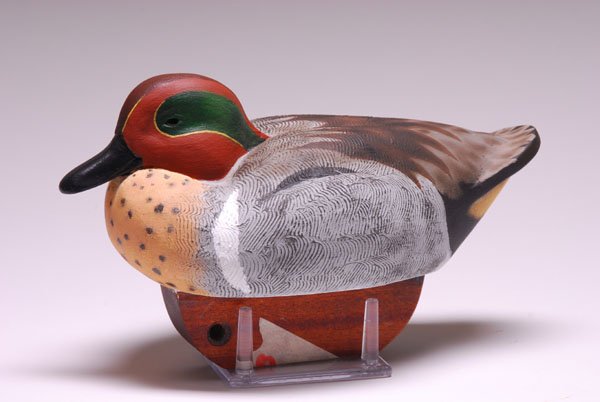 |
|
Notice the edges of these coverts are uniform and even. |
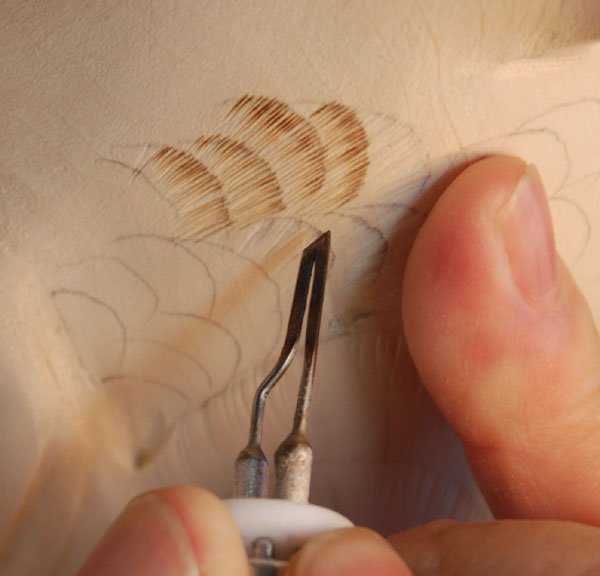 |
|
All four coverts have been burned with the same technique. Rogers begins at the outer edge and pulls toward the edge of the next feather. Less burning occurs as the pen cools and the resulting burn is lighter in color. |
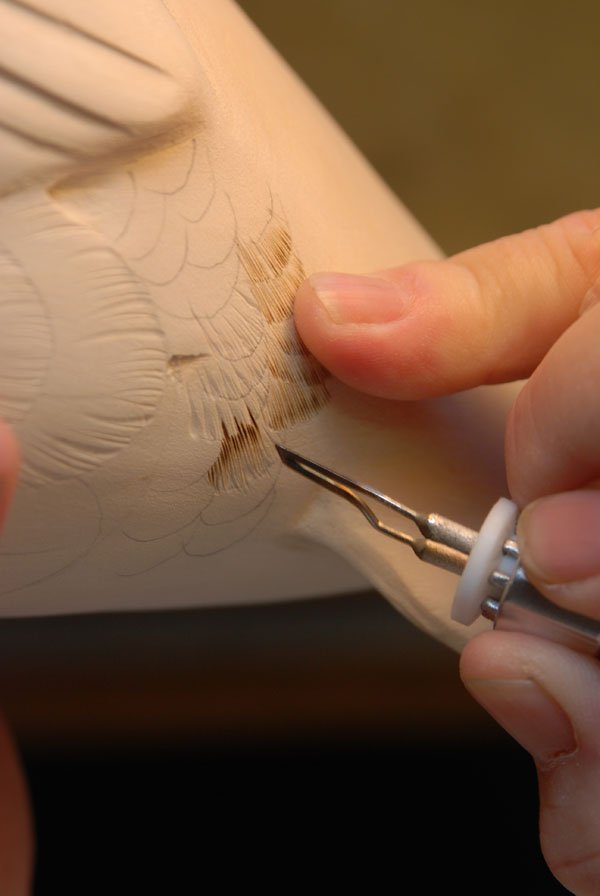 |
|
Now, Rogers turns the bird so he can reverse his burning technique. This time, he starts the pen inside the feather and draws it toward the outer edge. |
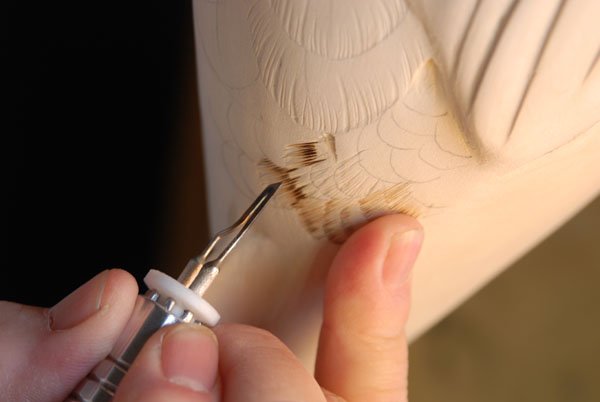 |
|
Notice each burn begins at, or above, the edge of the next covert. In this case, the feather edges are not as uniform or distinct. |
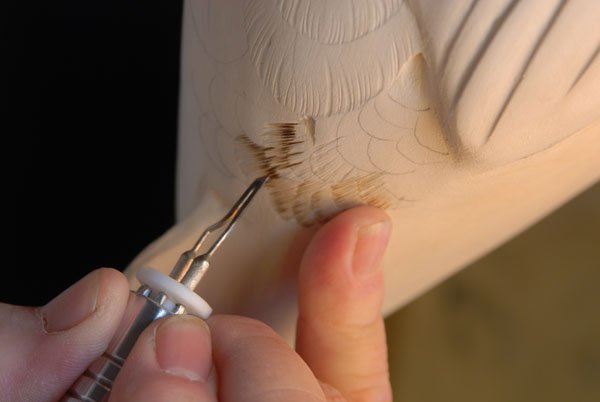 |
|
Notice how Rogers begins the pen higher on the upper coverts to define major splits. |
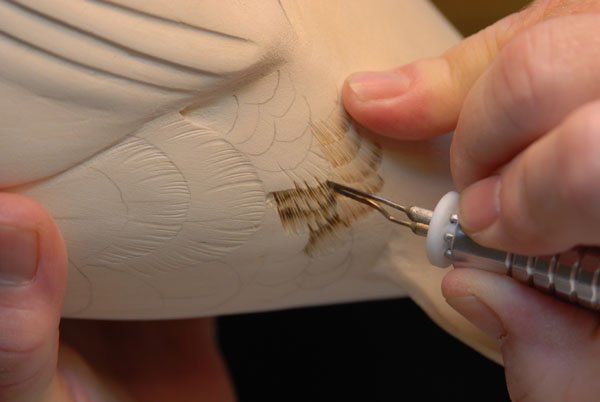 |
|
|
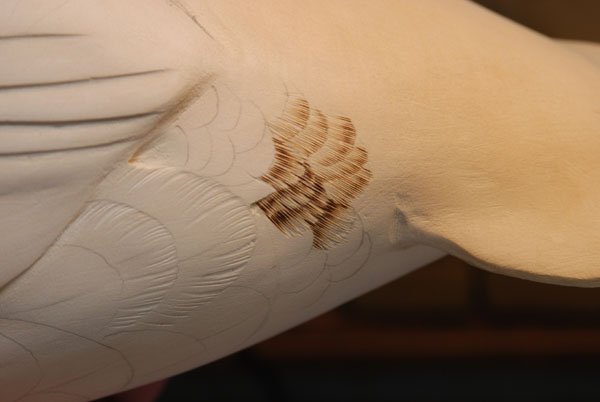 |
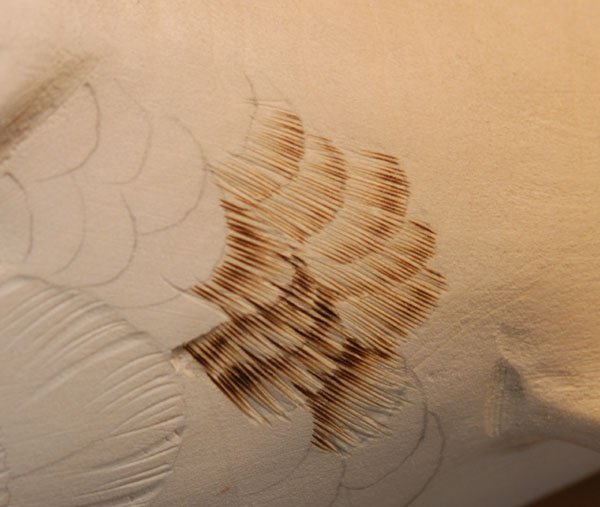 |
| Here are two rows of coverts burned with different techniques. Notice some major splits that were stoned and pushed down are not burned. |
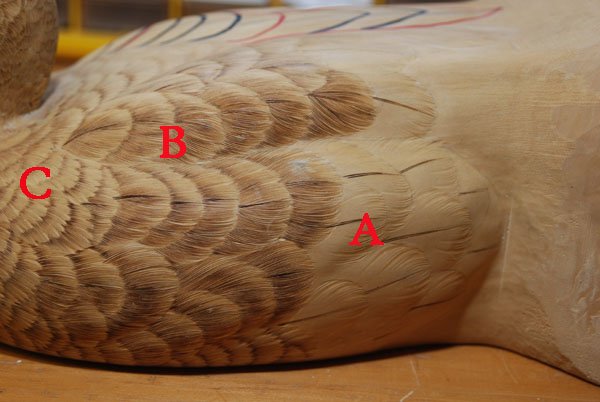 |
|
Rogers' demo bird offers several looks at different effects of burning. In section A, feathers of the side pocket have been stoned and quills have been burned.
In section B, feathers have been burned from the quill outward. And in section C, the shoulder coverts have been burned with the inside-to-outside technique.
Rogers says, "Burning can be varied to create a different look. Just depends what you are looking for and what painting style will be used." |
